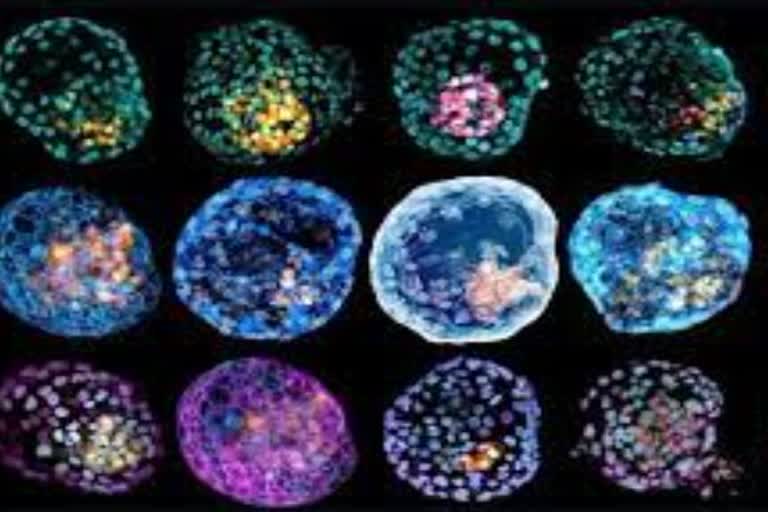Oxford : Children, even some who are too young for school, know you can't make a baby without sperm and an egg. But a team of researchers in Israel have called into question the basics of what we teach children about the birds and the bees, and created a mouse embryo using just stem cells. It lived for eight days, about half a mouse's gestation period, inside a bioreactor in the lab.
In 2021 the research team used the same artificial womb to grow natural mouse embryos (fertilised from sperm and eggs), which lived for 11 days. The lab-created womb, or external uterus, was a breakthrough in itself as embryos could not survive in petri dishes. If you're picturing a kind of silicone womb, think again. The external uterus is a rotating device filled with glass bottles of nutrients. This movement simulates how blood and nutrients flow to the placenta. The device also replicates the atmospheric pressure of a mouse uterus.
Some of the cells were treated with chemicals, which switched on genetic programmes to develop into placenta or yolk sac. Others developed into organs and other tissues without intervention. While most of the stem cells failed, about 0.5% were very similar to a natural eight-day-old embryo with a beating heart, basic nervous system and a yolk-sac. These new technologies raise several ethical and legal concerns.
Artificial wombs :In the latest study, the scientists started with collections of stem cells. The conditions created by the external uterus triggered the developmental process that makes a fetus. Although the scientists said we are a long way off synthetic human embryos, the experiment brings us closer to a future where some humans gestate their babies artificially. Each year over 300,000 women worldwide die in childbirth or as a result of pregnancy complications, many because they lack basic care. Even in wealthy countries, pregnancy and childbirth is risky and healthcare providers are criticised for failing mothers.
There is an urgent need to make healthcare more accessible across the planet, provide better mental health support for mothers and make pregnancy and childbirth safer. In an ideal world every parent should expect excellent care in all aspects of motherhood. This technology could help treat premature babies and give at least some women a different option: a choice of whether to carry their child or use an external uterus. Some philosophers say there is a moral imperative to develop artificial wombs to help remedy the unfairness of parenting roles. But other researchers say artificial wombs would threaten a women's legal right to terminate a pregnancy.
Synthetic embryos and organs :In the last few years, scientists have learned more about how to coax stem cells to develop into increasingly sophisticated structures, including ones that mimic the structure and function of human organs (organoids). Artificial human kidneys, brains, hearts and more have all been created in a lab, though they are still too rudimentary for medical use.
